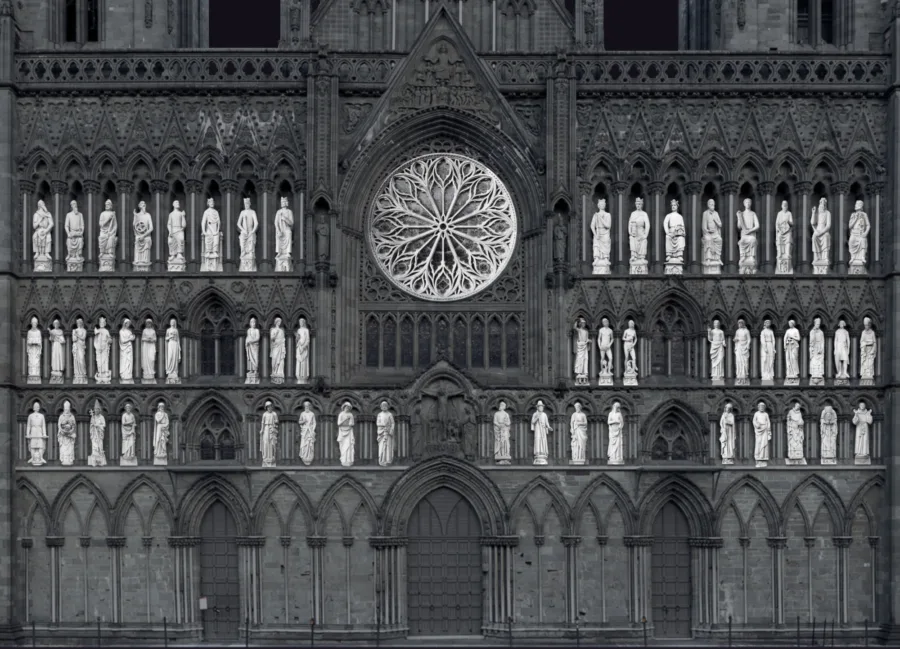St John the Apostle
St John was the only apostle to die a natural death.

John was a fisher from Galilee. He wrote the eponymous Gospel of St John, where he is described as “the disciple Jesus loved”. He became a leading figure in the earliest Christian congregation in Jerusalem.
According to tradition, St John was the only apostle to die a natural death. During the persecution of Christians under the Roman emperor Domitian, two attempts were made to murder St John with cups of poisoned wine. Both attempts failed. The poison was supposed to have disappeared in the form of a snake, enabling St John to safely drink from the cup.
St John was said to have lived as a hermit on the island of Patmos in the Aegean Sea. There he received a revelation that was to become the last book in the Bible (the Book of Revelation).
The statue
The original statue of St John from the 13th century is almost completely preserved, except both hands are missing. The original is placed in the Archbishop’s Palace Museum. There was a lengthy debate about whether the new statue should hold a book or a chalice. It was finally decided that the saint should hold a book.
-
Feast day
27 December
-
Attribute
Chalice (poison cup) or book.
-
Patron saint of
Theologians, sculptors, painters, authors, booksellers, printers, bookbinders, papermakers, grape growers, glassblowers, candlemakers, basketmakers.
-
Invoked against
Poisoning, burns, foot problems, epilepsy and hail.
-
Invoked for
A good harvest.
-
The sculpture
The copy on the West Front was reconstructed by Kristofer Leirdal and was carved by Odd Kalvå in 1981.


